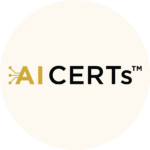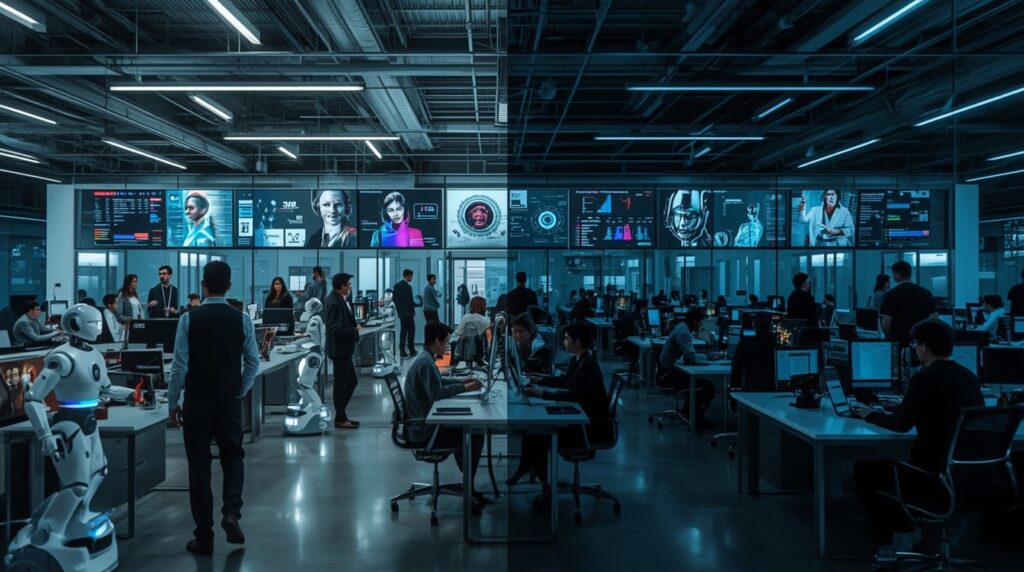
AI CERTS
3 months ago
2025 AI Job Market : Over 10,000 Jobs Lost to Automation
From workforce planning challenges to growing calls for AI regulation, experts warn that we are entering an era where the future of work will be defined by how well governments, companies, and employees adapt to AI-driven disruption.

Automation Takes Center Stage
The most affected sectors in the 2025 AI job market include customer service, data entry, logistics, and even some software engineering roles. AI-driven systems are now capable of not only processing information but also making decisions, executing workflows, and learning from their own performance without human intervention.
- AI chatbots are replacing large call center teams.
- Automated analytics platforms are reducing the need for junior data analysts.
- Warehouse robots, enhanced with machine vision, are streamlining supply chains.
Industry experts with certifications like the AI+ Workforce Planning™ argue that businesses need to anticipate these trends before they cause organizational shockwaves.
The New Skills Gap
As automation accelerates, the demand for human labor isn’t disappearing—it’s shifting. The AI job market now prioritizes roles that complement rather than compete with automation: AI oversight, ethics compliance, and creative problem-solving.
However, this shift has exposed a severe skills gap. Millions of workers lack the AI literacy needed to transition into emerging fields. The need for upskilling has never been greater, with training programs like the AI+ Executive™ helping leaders navigate this transformation.
Workforce Planning in the Age of AI
For HR executives, workforce planning in 2025 requires a hybrid approach—balancing automation adoption with human capital development. The goal is no longer just cost-cutting; it’s ensuring organizational resilience by maintaining a workforce that can adapt to evolving AI capabilities.
Key strategies include:
- Conducting AI impact assessments before automation rollout.
- Offering cross-training programs for employees at risk of redundancy.
- Creating “AI + human” collaborative workflows instead of pure replacement models.
AI Regulation: A Growing Debate
As the AI job market evolves, policymakers are stepping in to regulate the pace and scope of automation. Proposals include:
- Mandating human oversight in critical decision-making roles.
- Implementing “automation impact reports” for companies exceeding certain AI adoption thresholds.
- Funding public retraining initiatives through AI taxation.
Advocates for stricter AI regulation argue that without these measures, the future of work will tilt toward economic inequality. Critics, however, warn that overregulation could stifle innovation and slow AI’s potential benefits.
The Future of Work: Coexistence, Not Replacement
Despite the dramatic job losses, many analysts believe the AI job market will eventually stabilize as new roles emerge—AI auditors, digital ethics consultants, synthetic data curators, and more.
This transition will require widespread investment in reskilling programs, with certifications like AI+ Project Manager™ becoming essential for professionals aiming to lead AI-integrated teams.
Case Studies: Winners and Losers
- Winner: A logistics firm cut warehouse staff by 40% but retrained remaining employees to operate, maintain, and improve AI systems—resulting in higher wages and job satisfaction.
- Loser: A financial services company automated its customer onboarding process without retraining its support staff, leading to sudden layoffs and reputational damage.
Economic Impact and Global Trends
The economic ripple effect of the AI job market shift is profound. While AI adoption has boosted productivity, displaced workers are facing prolonged unemployment spells, especially in regions without robust retraining infrastructure.
Globally, nations with proactive workforce planning policies—like Singapore and Germany—are seeing smoother transitions. In contrast, countries slow to adapt face growing unemployment rates and political unrest.
A Call for Proactive Leadership
Leaders must move beyond reactive measures and embrace proactive adaptation strategies:
- Embedding AI education into all levels of the workforce.
- Partnering with industry and academia to forecast future skills needs.
- Treating AI integration as a human capital transformation, not just a technology upgrade.
Conclusion
The AI job market shake-up of 2025 is not the end of human employment—it’s the start of a profound transformation. Whether this transformation leads to economic prosperity or widespread hardship depends on the choices made today.
The next decade will demand visionary leadership, effective AI regulation, and inclusive policies that ensure the future of work benefits all. The challenge is urgent, but so is the opportunity.
"Want to learn how AI is transforming security as well as jobs? Read our deep dive into the battle between Generative AI and cybersecurity."



